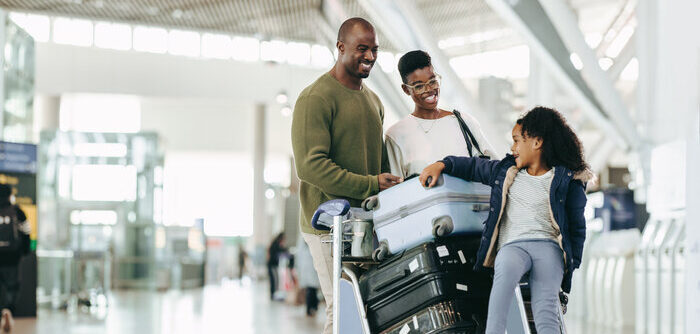Airport lounge company Airport Dimensions has published the findings from its report, Airport Experience Research – The Transforming Airport Revenue Landscape, which revealed that 71% of passengers enjoyed their time at the airport in 2021/22.
Following the difficulties caused by the return to travel across the globe in 2021/22, this satisfaction rate is an increase on the previous year. The survey was conducted in partnership with market research agency Dynata. The research draws from the experiences of more than 8,500 air travelers covering a wide and representative cross-section of demographics.
However, the research did also highlight geographical differences in satisfaction. Happiness levels were found to be highest in Asia, perhaps as a reflection of the fact that the region’s airports tend to be newer than older infrastructure across Europe, as well as what Airport Dimensions defines as a more upbeat attitude to travel. In China, 92% of passengers reported that they enjoyed their time at the airport while the same was said by 85% of passengers in Indonesia and Hong Kong and 83% in India and Singapore. Conversely, in Europe, just 56% of airport passengers in Germany and 50% in the UK reported a positive experience.
Continuing a key trend found in Airport Dimensions’ 2021/22 survey, this report identified that satisfaction continued to dip in the middle section of the journey through the airport. While satisfaction with the landside part of the journey comes in at 73%, with check-in and baggage drop at 79%, and security checks and queues at 74%, satisfaction dropped to 67% when travelers were asked about offerings in the departures areas. The research revealed that 73% of passengers are satisfied with the level of comfort offered in the seating areas and the range and quality of retail and dining. However, 12% reported active dissatisfaction with departures facilities. Additionally, 21% said they were unhappy with the value for money for retail and dining on offer in departures. Alongside this, 11% reported discontent with the speed and reliability of the airport’s wi-fi. At this point in the airport journey, when travelers have the greatest ability and desire to spend, airports appear to be missing a prime opportunity to drive non-aeronautical revenue.
According to the research, passengers are now spending longer at the airport. A substantial 71% of passengers usually eat at the airport, spending around 17% of their time in restaurants and bars. Meanwhile, more than two-thirds (69%) spend an average of 13 minutes of their time shopping for their retail favorites, with the same number of passengers (69%) at the airport surfing the internet. In its report, the company emphasized that these activities either actively generate revenue for the airport or have the potential to do so.
It also noted the significance of generational differences in how passengers interact with the airport. For example, millennials spend an average of 13% of their time at the airport shopping whereas elders only spend 8% doing so. Gen Z and millennials average 14% of their time online or gaming. In comparison, baby boomers spend only 9% of their time online and elders spend 5%.
Mignon Buckingham, CEO of Airport Dimensions, said, “Our Airport Experience research offers essential insights for airports that will inform decisions about what the future of their spaces and revenue landscapes should look like. A new generation of travelers want, and indeed expect, different, more innovative and unique offerings at the airport. They are open to engaging with a wide range of offerings – from gaming to sleep options – if made easily accessible and appealing. Airports must understand this if they are to make meaningful changes as they reinvent themselves for the travelers of the future.”

